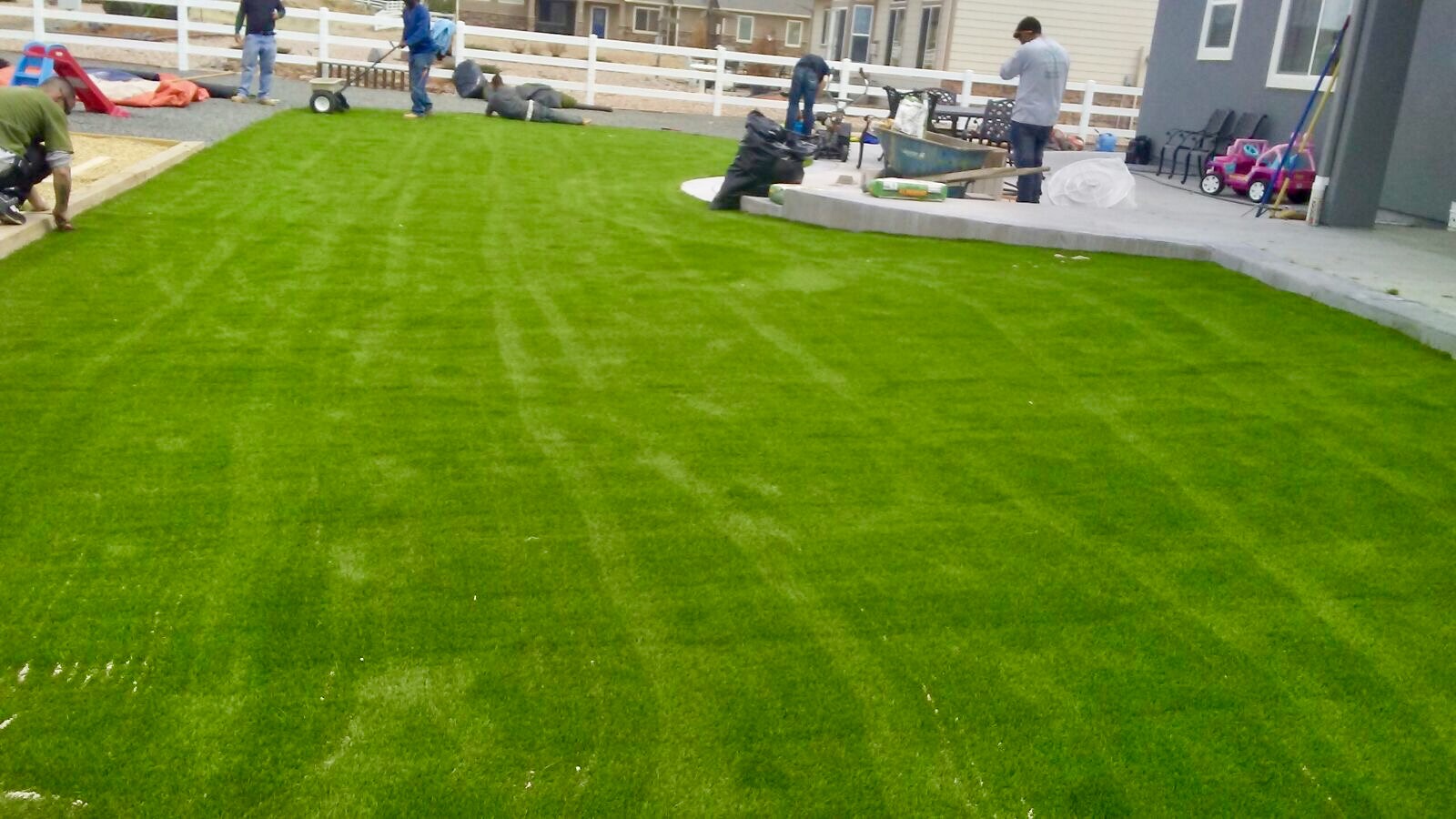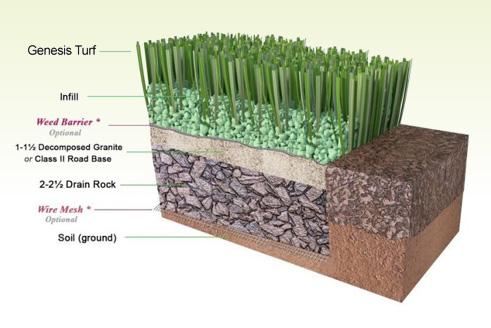See Why Homeowners Prefer Artificial Grass for Sustainable Landscaping Practices
As home owners increasingly prioritize sustainability in landscape design, man-made lawn has actually arised as an engaging alternative to conventional yard. What remains to be checked out is the full scope of benefits that artificial lawn can provide to home owners and the atmosphere alike.
Water Preservation Conveniences
Among the most considerable benefits of synthetic lawn is its duty in water conservation. Conventional lawn yards require considerable quantities of water to keep their lush appearance, usually resulting in overuse of regional water resources, particularly in deserts. In comparison, artificial turf eliminates this demand entirely, as it does not need watering. This not just preserves water yet additionally reduces the strain on municipal water systems, particularly during drought conditions.
In addition, the installment of fabricated grass can add to a much more lasting landscape. House owners can significantly decrease their water costs, enabling for reallocation of resources to other ecological campaigns or family uses. Furthermore, synthetic grass is designed to withstand numerous weather problems without the demand for extra watering, making it a suitable option for regions encountering water shortage.
The environmental benefits prolong past instant water savings. By lowering water usage, synthetic grass assists to reduce the impacts of environment change, maintaining important ecological communities that are intimidated by excessive water removal. As sustainable landscape design practices get grip, synthetic grass becomes an accountable choice for house owners seeking to produce environmentally friendly exterior spaces.
Lowered Maintenance Efforts
Synthetic grass substantially minimizes maintenance efforts contrasted to traditional turf yards. With fabricated lawn, property owners can get rid of the taxing tasks connected with natural landscape design, such as mowing, feeding, and weeding. This not just saves important time however additionally reduces physical labor, making lawn care easily accessible for people of all ages.
One of the most noteworthy benefits is the absence of routine mowing. Standard grass call for constant cutting to keep an aesthetically pleasing height, whereas artificial turf stays constantly lavish without the need for cutting. Additionally, homeowners no longer need to apply chemicals or plant foods, which are often required to maintain all-natural lawn healthy and balanced. This shift not only lightens the workload yet additionally advertises a neater, a lot more consistent appearance year-round.
Furthermore, synthetic grass is durable and durable, requiring very little maintenance past occasional brushing and washing to eliminate particles. This simplicity of upkeep allows homeowners to enjoy their exterior areas without the consistent concern of maintenance, offering more time for recreation and household tasks. Ultimately, the minimized maintenance efforts connected with synthetic turf make it an enticing option for those seeking a low-maintenance, aesthetically appealing landscape.

Environmental Effect Reduction
There is a growing acknowledgment of the environmental advantages related to fabricated grass, specifically in terms of water preservation and reduced chemical usage. Typical yards need significant quantities of water, especially in drought-prone regions, bring about enhanced stress on neighborhood water resources. In contrast, synthetic grass gets rid of the demand for irrigation, dramatically reducing water consumption and promoting sustainability.
Furthermore, standard lawn maintenance typically entails the application of fertilizers, herbicides, and pesticides, which can add to soil and water air pollution. Man-made lawn minimizes this environmental threat by requiring very little upkeep and basically removing the demand for hazardous chemicals. This not only enhances soil health but also safeguards local environments from hazardous overflow.
Additionally, the production of all-natural lawn yards normally involves making use of fossil fuels for trimming and landscape design devices, additional adding to greenhouse gas emissions. By choosing fabricated lawn, home owners can dramatically decrease their carbon impact related to grass care tasks.
Visual Charm and Flexibility
In addition to its ecological benefits, synthetic grass offers considerable visual allure and convenience for landscaping. Home owners can achieve a lush, eco-friendly look year-round, removing the seasonal fluctuations frequently linked with all-natural grass. This constant web visual not just enhances the visual appeal of a building but additionally adds to a polished and properly Recommended Reading maintained look.
Furthermore, synthetic grass is readily available in a selection of colors, textures, and designs, enabling personalization to fit private preferences and design themes - Phoenix turf companies. Whether utilized in domestic gardens, commercial spaces, or recreational locations, it can effortlessly integrate into varied landscape design styles, from modern minimal to lavish exotic settings
The versatility of fabricated lawn prolongs beyond plain look; it can be set up in different locations, consisting of rooftops, patio areas, and also indoor rooms, producing opportunities for unique landscape design services. Additionally, it is ideal for a variety of tasks, from kids's backyard to pet-friendly settings, offering functionality without endangering style.
Inevitably, the aesthetic allure and adaptability of synthetic lawn make it an appealing alternative for house owners seeking lasting landscaping options that do not give up charm for ecological responsibility.

Long-Term Price Cost Savings
Among the most compelling advantages of synthetic grass is its capacity for long-term expense financial savings. Unlike natural grass, which calls for routine upkeep-- including mowing, watering, feeding, and pest control-- synthetic grass dramatically reduces these recurring expenses. House owners can save a considerable quantity on water bills, particularly in areas where water scarcity is a pressing concern. The elimination of yard treatment solutions further adds to economic cost savings, as there is no need for specific tools or labor.
Furthermore, fabricated turf has a life-span of 15 to 25 years, relying on its quality and use. This resilience look here reduces replacement costs, making it a more economical choice in the long run. The first financial investment in fabricated lawn can commonly be recovered with the savings accrued over time.
While the ahead of time expense may appear greater compared to sod installment, the collective cost savings from decreased upkeep and water usage frequently outweigh these first expenditures. Ultimately, the fostering of synthetic grass not only advertises a sustainable landscape design service but likewise provides homeowners a monetarily smart option that straightens with long-lasting budgeting objectives.
Final Thought
Artificial turf emerges as a compelling choice for sustainable landscape design, using substantial benefits in water preservation, lowered maintenance efforts, and decreased environmental effect. As neighborhoods progressively prioritize ecologically friendly methods, the adoption of synthetic grass stands for a modern step toward achieving sustainable and resilient landscapes.
In addition, fabricated lawn is made to withstand numerous weather conditions without the need for additional watering, making it a perfect choice for areas encountering water shortage. (Phoenix turf companies)

Synthetic lawn arises as a compelling alternative for sustainable landscape design, using significant benefits in water conservation, lowered maintenance initiatives, and decreased ecological effect.